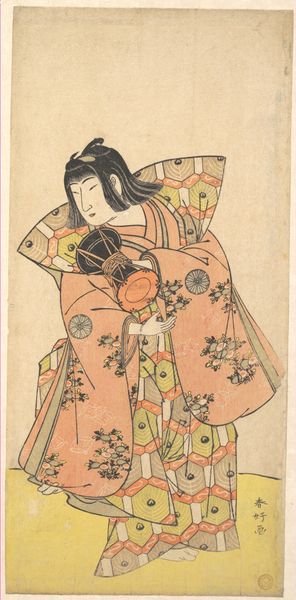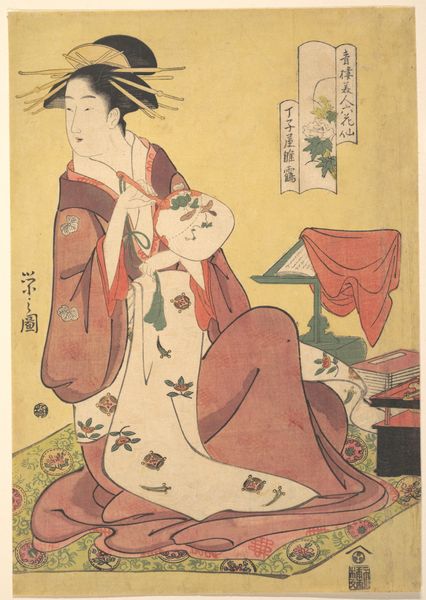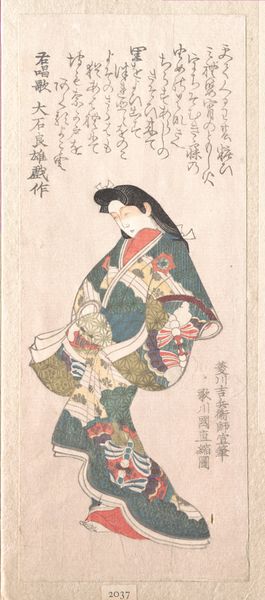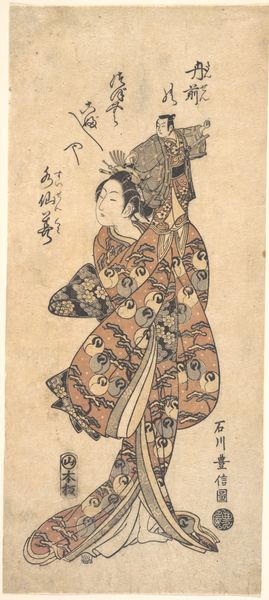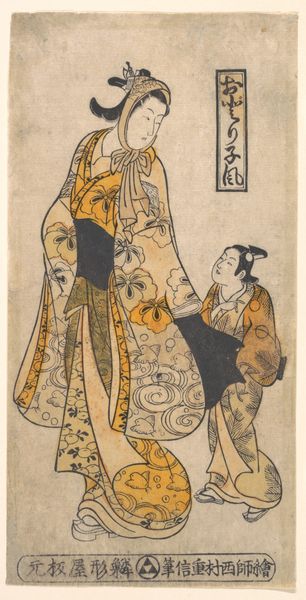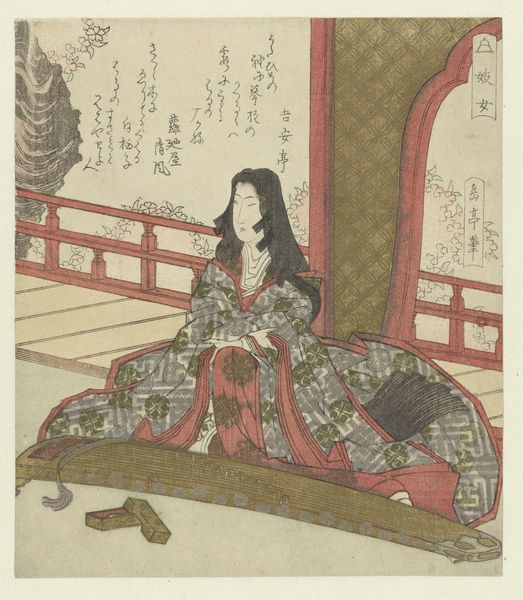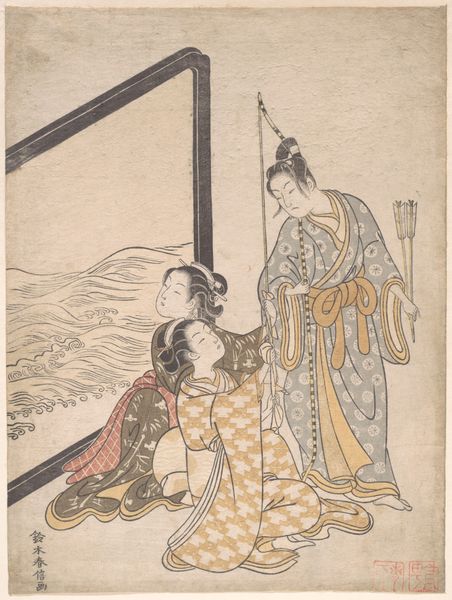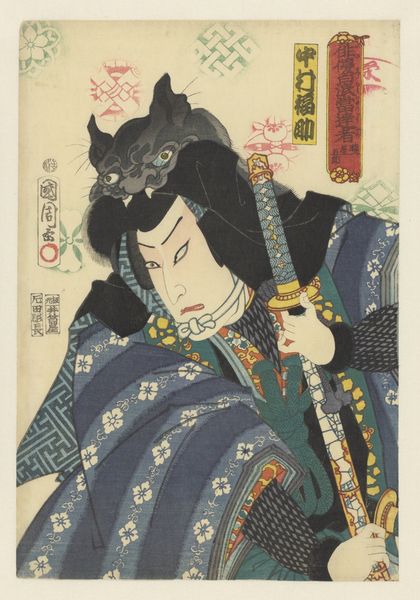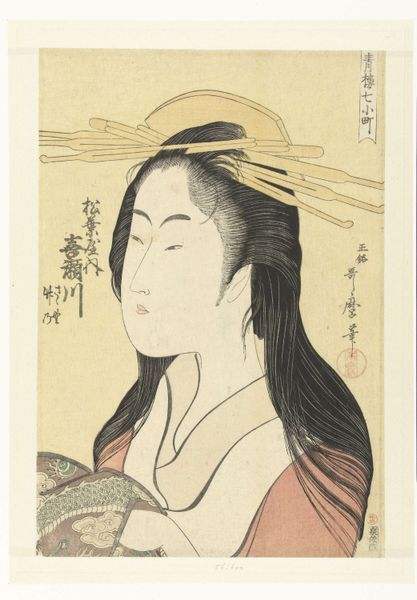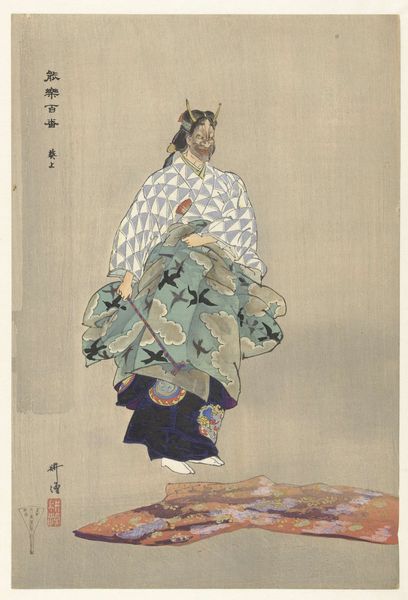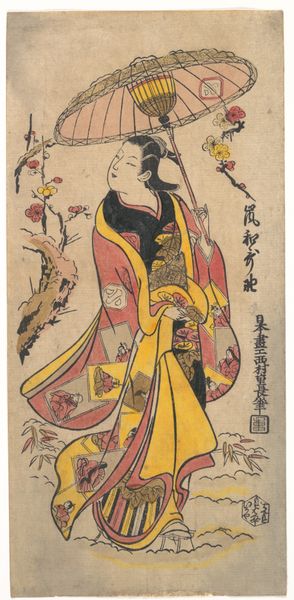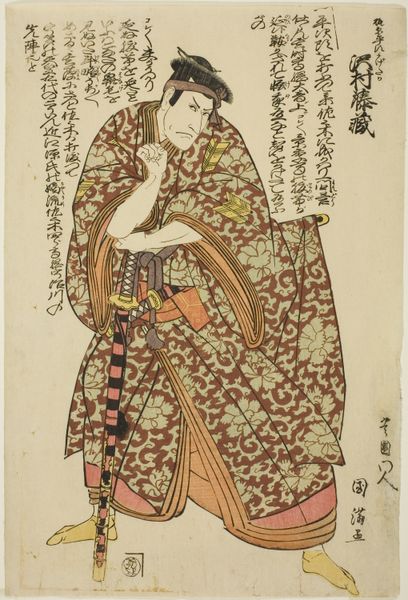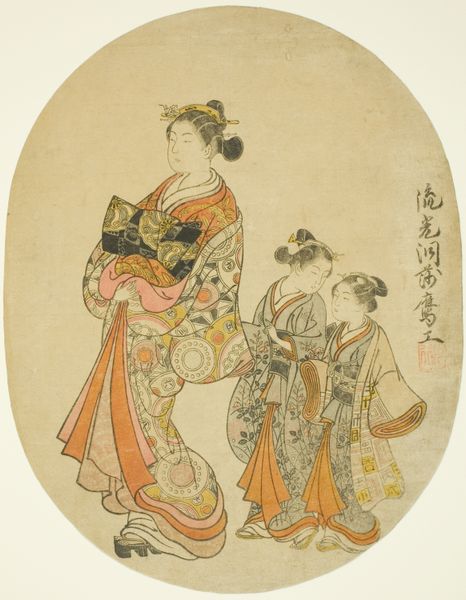
print, textile, woodblock-print
#
portrait
#
narrative-art
# print
#
asian-art
#
textile
#
ukiyo-e
#
figuration
#
child
#
woodblock-print
#
watercolour illustration
#
genre-painting
Dimensions: height 396 mm, width 257 mm
Copyright: Rijks Museum: Open Domain
Editor: This is "Kintoki en Yamauba," a woodblock print by Kitagawa Utamaro from the late 1790s. There’s something really tender about it. It depicts a beautiful woman with incredibly long hair playing with a child and a cat. How do you interpret this work, especially within its historical context? Curator: This ukiyo-e print offers a glimpse into the complex social fabric of Edo-period Japan. Consider the figure of Yamauba: traditionally, she is a mountain witch, an "othered" figure existing outside of conventional society. Yet here, she is presented as a beautiful, thoughtful woman, fully engaged in nurturing Kintoki, who will become the legendary hero Kintaro. Editor: That's interesting! So, the artist is consciously subverting expectations? Curator: Precisely! The print participates in a dialogue about societal roles and the portrayal of women. Think about the role of the "outsider". Yamauba is marginalized because she lives outside societal norms. By depicting her as beautiful, maternal, and intelligent, Utamaro challenges these perceptions. Does the boy holding a cat further normalize this family? Editor: I think so. The cat adds a playful domestic touch, making them seem less like mythical figures and more like an ordinary family. The small framed drawing within the print normalizes this reading, too. Curator: How do you see the implications of presenting such a marginalized figure in a position of care and strength? Editor: It seems almost like Utamaro is making a statement about the beauty and importance of unconventional motherhood, a radical idea, maybe. Curator: Absolutely. It encourages us to question who gets to be a mother, and what defines a family. The print is a testament to the power of art to challenge social norms and elevate marginalized figures within broader cultural narratives. It's more than just a pretty picture. Editor: I see it now; I initially focused on the surface beauty, but it goes so much deeper. I am grateful for you shining light on this.
Comments
No comments
Be the first to comment and join the conversation on the ultimate creative platform.
